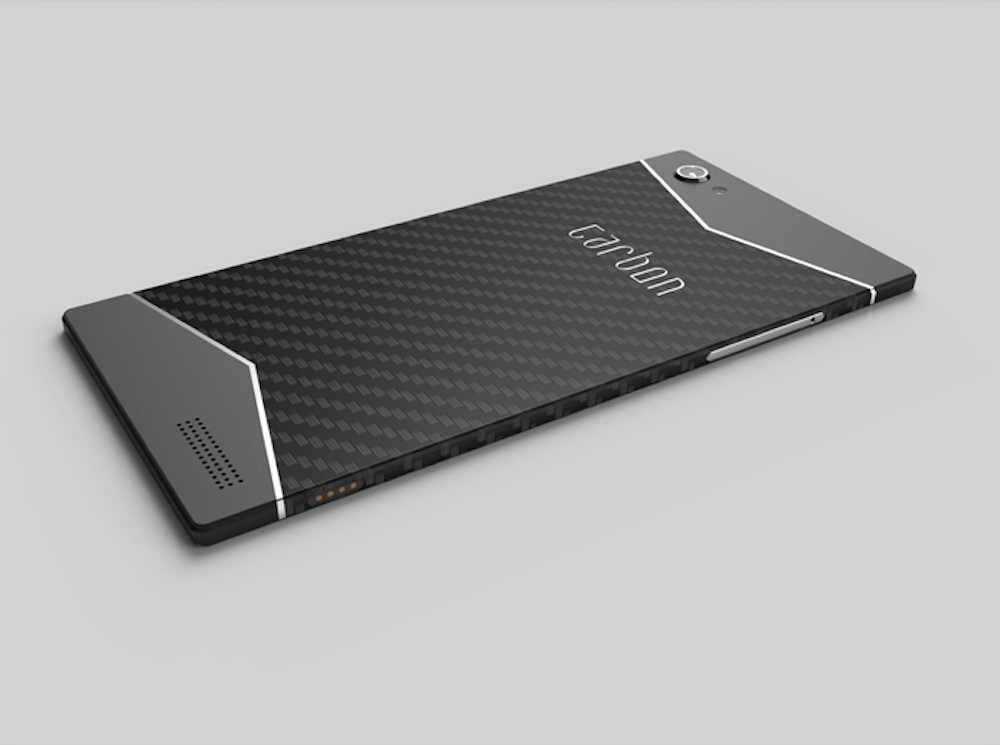Could this Dubai startup have produced the world’s thinnest smartphone?

A Dubai-based startup claims to have manufactured the thinnest smartphone available worldwide, with a width of 4.6 mm (a little more than half of that of the iPhone 6) using carbon fiber technology.
Virtual reality engineer and cofounder of Carbon Works, Firas Khalifeh, believes that he and cofounder Jorge Martins have cracked the carbon fiber smartphone enigma.
“We want to be the first to debut a luxury smartphone so thin and sleek, which of course, wouldn’t have been possible without using carbon fiber,” Khalifeh told Wamda.
If indeed the phone, which Khalifeh said will be launched at the upcoming Gitex Technology Week in October, is only 4.6 mm in width, this would mean a new Guinness record for the slimmest available smartphone. Currently that title is held by a Chinese 5.1 mm Elife S phone.
Carbon fiber in manufacturing
Carbon fiber is an extremely tough but lightweight, steel-like material that has a smooth texture. It’s used for various manufacturing purposes in aerospace, automobiles, sporting goods, drones and lightweight DIY furniture.

While being quite popular in manufacturing, giant phone moguls like Samsung and Motorola haven’t quite gotten the hang of this technology.
In 2013 Samsung announced that it would be making a “new materials partnership” in order to produce better phone covers - these would include carbon fiber material. They have yet to release a carbon fiber phone.
Figuring out a solution
Khalifeh told Wamda that they believe they have found a solution to the issue that has stumped others and in October they’ll be showcasing a batch of 20 tablets in partnership with regional telco Etisalat.
However, when probed further for a detailed explanation, he could only answer in vague technical terms.
“We used a special composite material [of carbon fiber] that was invented a few years ago and we modified its behavior so it works like a chassis of a phone,” he said.
A chassis is a frame used in cars and phones to hold the components together and, more importantly, to manage heat dissipation from the motor/battery. So basically, carbon fiber was modified with other components in the phone to function like a chassis.

While this explanation may seem vague- or overly simplified- Khalifeh was adamant “that he can’t say anymore before the launch because it’s highly confidential. We’re working on getting it patented in the US,” where the company is registered.
Skepticism
Skeptics like Fouad Fattal, cofounder of Krimston, the first dual SIM smartphone device, are concerned about one major issue: battery overheating and possible explosion.
“Heat dissipation from a battery is the one huge limitation when it comes to designing smartphones (which are compressed by nature), because battery is the only component that cannot be compressed,” Fattal explained to Wamda.
“This is because the way the battery technology functions- with lithium material and its layers- makes it incompressible to an extent.”
There have been several incidents of battery overheating worldwide, with the scandal of Samsung’s Galaxy Note 7 being the most prominent. The South Korean mogul was forced to recall thousands of phones from the market because of the incident.
So does a compressed phone of only 4.6 mm in width run the risk of overheating?
“I personally think so,” Fattal said, “although they might have changed the efficiency of power consumption of certain parts, like the screen. Or they might have played with the wall thickness of the phone to make it look slimmer. We’ll have to wait and see.”
How to be thin
Khalifeh and Martins met in 2014 when they collaborated on a project for Khalifeh’s then VR and interactive media agency, Maroon Interactive. When Martins offered to get on board, the two quickly sketched a design for the smart phone and started looking for manufacturers in China in early 2015.

Having previously raised a six-figure amount between themselves, they then had to look elsewhere to get themselves to China.
As is the case when pitching a new technology, half of those they approached didn’t believe in them. “The other half said basically ‘show me the phone and I’ll give you the money’, but we had run out of funds for the prototype.” So Khalifeh got creative. Being an engineer with a large portfolio of new inventions (he works as the innovation lead in a Belgian company specialized in VR and AR) he visited old colleagues.
In one year they visited 55 manufacturers in China and narrowed down the manufacturing of parts to 27 manufacturers.
Martins, who made all the China visits due to Khalifeh’s Syrian visa issues, had to be accompanied by an interpreter all the time, as none of the Chinese engineers spoke English. “It’s very difficult communicating with them and getting your message through as to the specifications you want,” Khalifeh said.
Carbon Works are now in talks with several private investors to close a $500,000 round in October.


